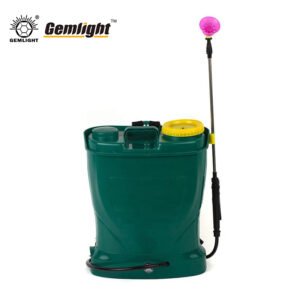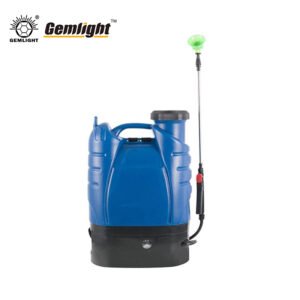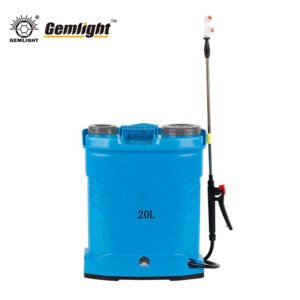Selecting the right hand forged machete can transform daily farm work into a more efficient and safer experience.
In this guide, I explore how to identify high-quality forge machetes, compare hand bolo forged machete prices, and choose the best materials and features for African fields. I cover the advantages of handcrafted over factory-made machetes, essential maintenance tips, and practical uses across different farm tasks. By understanding these key aspects, African farmers can invest wisely in a durable, reliable tool that lasts for years and enhances productivity in the field.

1. Understanding the Benefits of a Hand Forged Machete
A hand forged machete delivers unmatched strength and precision for African farming tasks. Unlike mass-produced alternatives, these tools feature blades crafted through careful forging, ensuring durability and a sharp edge. Farmers benefit from improved cutting efficiency when clearing brush, harvesting crops, or managing small trees. The handcrafted design also provides better balance and control, reducing fatigue during long hours of work. Choosing a hand forged machete means investing in a reliable tool that withstands tough conditions, offering long-term value for everyday agricultural needs.
2. How to Identify a High-Quality china Machete
Not all forge machetes meet the same standards. I recommend examining the steel quality, blade thickness, and forging consistency. A high-quality machete displays uniform heat treatment, minimal warping, and a sharp, long-lasting edge. Handles should offer comfort, durability, and secure attachment to the blade. Observing these features helps prevent early wear and breakage, ensuring safety during heavy-duty farm use. African farmers can confidently select machetes that combine strength, functionality, and comfort when evaluating these key attributes.
3. Hand Bolo Forged Machete Price: What to Expect in Africa
Hand bolo forged machete prices vary depending on blade length, steel quality, and craftsmanship. Premium forged blades cost more but offer greater longevity and superior cutting performance. Cheaper options may save money initially but often wear out faster, requiring replacements. Understanding the typical price range for hand bolo forged machetes in African markets allows farmers to make informed decisions without overspending. Balancing cost with durability ensures the tool remains reliable for years, delivering both efficiency and value in daily farm operations.
4. Materials Matter: Choosing the Right Hand Forged Machete
The choice of material directly impacts a machete’s strength and durability. High-carbon steel provides superior edge retention and resistance to bending, while stainless steel resists corrosion but may require more frequent sharpening. Handles can be wood, fiberglass, or composite, each offering different grip comfort and durability. Selecting a hand forged machete with the right combination of blade and handle materials ensures it withstands African farm conditions, delivers precise cutting, and maintains reliability under heavy workloads.
5. Forge Machete vs. Factory-Made: Why Handcrafted Wins
Forge machetes outperform factory-made alternatives in durability and cutting performance. Handmade forging allows for precise control of blade thickness, edge angle, and balance. Factory-made machetes may cut costs but often sacrifice strength and edge retention. African farmers benefit from the resilience, longer lifespan, and improved ergonomics of a hand forged tool. The added craftsmanship ensures the machete handles tough tasks efficiently, making it a smart investment for those who rely on it daily in agricultural work.

6. Essential Features Every Hand Forged Machete Should Have
A dependable hand forged machete includes a well-balanced blade, a comfortable handle, and a full tang for strength. Blade length should match the tasks, with thicker blades suitable for heavy cutting and thinner blades for precision. A secure handle attachment prevents accidents, while ergonomic design reduces hand fatigue. Additional features like corrosion-resistant coating or a protective sheath enhance longevity. Farmers who prioritize these essential features ensure safety, efficiency, and durability in daily farm operations.
7. Hand Bolo Machete Price Guide for African Farmers
African farmers need a clear understanding of hand bolo forged machete pricing. Prices depend on blade length, steel grade, handle material, and forging quality. Investing in mid-to-high range machetes often pays off with long-term performance, while extremely cheap options may fail quickly. Farmers should compare price with features and durability to ensure the best value. Knowing the price range also helps avoid overpaying while securing a tool that meets demanding agricultural needs.
8. Caring for Your Hand Forged Machete to Ensure Longevity
Proper maintenance extends a hand forged machete’s life. I recommend cleaning the blade after each use, drying it thoroughly, and applying light oil to prevent rust. Sharpening regularly keeps the edge effective, while checking the handle and rivets ensures safe use. Storing the machete in a protective sheath reduces exposure to moisture and damage. Consistent care preserves cutting efficiency, strengthens reliability, and maximizes the investment African farmers make in their hand forged tools.
9. Top Uses of a Forge Machete on African Farms
A forge machete serves multiple purposes: clearing brush, harvesting crops, trimming small trees, and cutting cane or grass. Its heavy-duty design allows farmers to tackle dense vegetation efficiently. A hand forged blade provides precision for delicate tasks while maintaining toughness for challenging cuts. Versatility makes it indispensable for daily farm activities, reducing the need for multiple tools. Choosing the right forge machete ensures farmers can complete diverse tasks with one durable, reliable implement.
10. How to Compare Hand Bolo Forged Machete Price and Quality
Price alone does not guarantee quality. I advise African farmers to evaluate blade steel, craftsmanship, and handle ergonomics alongside cost. Inspecting the forging process, edge retention, and balance helps identify tools that offer the best value. Comparing multiple options ensures a smart investment, balancing affordability with durability. Understanding the link between hand bolo forged machete price and quality empowers farmers to choose a machete that performs reliably in demanding farm conditions for years.

| Product Name | Material | Color | Blade Length (in) | Overall Length (in) | Handle Material | Weight (lbs) |
|---|---|---|---|---|---|---|
| Classic Hand Forged Machete | High-Carbon Steel | Silver/Black | 12 | 18 | Hardwood | 1.2 |
| Heavy-Duty Forge Machete | Carbon Steel | Black | 14 | 20 | Hardwood/Fiberglass | 1.5 |
| African Hand Bolo Machete | High-Carbon Steel | Dark Gray | 16 | 22 | Hardwood | 1.8 |
| Lightweight Hand Forged Machete | Carbon Steel | Silver | 10 | 16 | Fiberglass | 1.0 |
| Multi-Purpose Forge Machete | High-Carbon Steel | Black | 13 | 19 | Hardwood | 1.3 |
| Long-Handled Hand Machete | High-Carbon Steel | Dark Gray | 18 | 26 | Hardwood | 2.2 |
| Farm-Grade Bolo Forge Machete | Carbon Steel | Black | 15 | 21 | Hardwood | 1.9 |
About us:
Dingzhou Gemlight Cutting Tools Co., Ltd.,With a solid foundation since 1990, Gemlight machete is a trusted name in the field of cane machete manufacturing. We focus on R&D, design and production to produce high quality wholesale china machete and shovel,hoe,pickaxe,sickle,farm tools.
Gemlight Machete factory Based in Baoding, Hebei, China, we benefit from efficient logistics and fast delivery. Our products have been well received in more than 50 countries, thanks to our commitment to customer satisfaction




